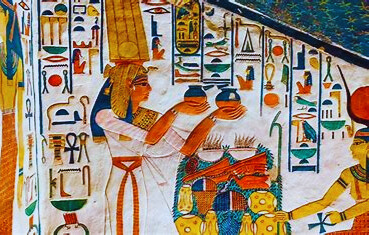Ancient Art:
The term “ancient art” describes the wide range of artistic creations created by highly developed ancient societies that used various writing systems, including Mesopotamia, Persia, Egypt, Greece, and Rome, as well as ancient China, India, and Palestine. Prehistoric art is the term typically used to describe the artwork created by preliterate societies; it is not discussed here. Pre-Columbian art and articles like Maya art, Aztec art, and Olmec art cover these dates even though several pre-Columbian societies had writing centuries before the arrival of Europeans.
Mesoamerica:

Article focus: Mesopotamian art
Mesopotamia, which is pronounced “Beth Nahrain” and means “Land of rivers” in Syriac, is a toponym for the region of the Tigris and Euphrates River system, which includes parts of modern-day Iraq, northeastern Syria, southeast Turkey, and southwest Iran. The name Mesopotamia is derived from the Greek phrase Μεσoποταμία, which means “[land] between the rivers.” Some of the oldest known civilizations developed writing and agriculture inside its borders. There, numerous civilizations existed and left behind a wealth of prehistoric artwork. [Reference required]
Bronze Period the Sumerian, Akkadian, Babylonian, and Assyrian empires were among the Mesopotamian civilizations. Mesopotamia was dominated by the Neo-Assyrian and Neo-Babylonian empires during the Iron Age. Mesopotamia was ruled by the native Sumerians and Akkadians (including Assyrians and Babylonians) from the first.
Early Modern to Renaissance Art:
This time span, which spans the years 1400 through 1880, produces many of our most beloved works of ancient artz.
During the Renaissance, Italian artists produced a large portion of the renowned art. Brunelleschi and Donatello, two well-known artists from the fifteenth century, laid the groundwork for the later works of Botticelli and Alberti. The following century saw the rise of the High Renaissance, which produced works by Michelangelo, Raphael, and Da Vinci.
During this time, several schools were established in Northern Europe, including the Fontainebleau School, The Little Masters, and Antwerp Mannerism.
Following the lengthy eras of the Northern Renaissance, Italian Renaissance, and Baroque, we started to witness the emergence of new art trends more frequently.
Western art by the 1700s had adopted a a collection of styles. These trends included Neo-Classicism and Rococo, and were succeeded by other lesser-known styles as well as Romanticism, Realism, and Impressionism.
This was the time of the Momoyama and Edo Periods in Japan, and the Ming and Qing Dynasties in China. Additionally, throughout this period in American history, the Aztec and Inca peoples created unique works of art.
Modern and Contemporary Art:
The majority of people believe that contemporary art began in the 1970s and has continued till the present. The most intriguing thing is that art history hasn’t kept up with the movements that have identified as such, or fewer movements are identifying as such.
Nevertheless, the list of -isms in the art world is getting longer. The 1970s saw a rise in Neo-Expressionism, Neo-Conceptualism, and Feminist Art, as well as Post-Modernism and Ugly Realism. In addition to BritArt and Neo-Pop, the 1980s saw the rise of Neo-Geo, Multiculturalism, and the Graffiti Movement.
It seemed as though people had ran out of names for art movements by the time the 1990s arrived. They also grew less distinct and somewhat odd. Toyism, Lowbrow, Bitterism, Stuckism, Net Art, and Artefactoria are a few of the trends over the ten-year period. And appreciate the Thinkism and Funism of the twenty-first century, even though it’s still fresh.
Preserving and Investigating Ancient Art:
Ancient art preservation enables organizations like the British Museum and the Metropolitan Museum of Art to carry out their stewardship role for the collective legacy of humanity. These organizations use careful conservation techniques to preserve artifacts from antiquity, guaranteeing their survival for use in teaching in the future.
Cooperation is essential for the development of best practices in preservation across museums, including the National Archaeological Museum. Beyond simple upkeep, their studies of ancient trade, sociocultural conventions, and the dissemination of ideologies like Christianity through the medium of ancient artz increase our understanding of civilizations as a whole. By means of instruction, these establishments provide the general people with access to the mysterious realm of antiquity, fostering a respect and acknowledgment of the various cultural accomplishments that span historical periods.
for more information visit our Homepage

